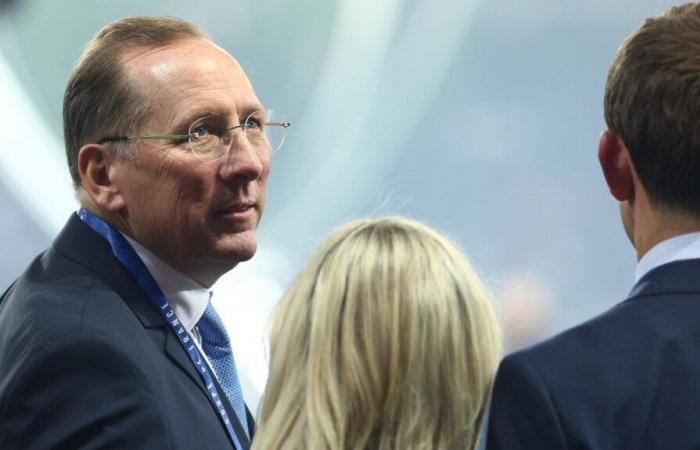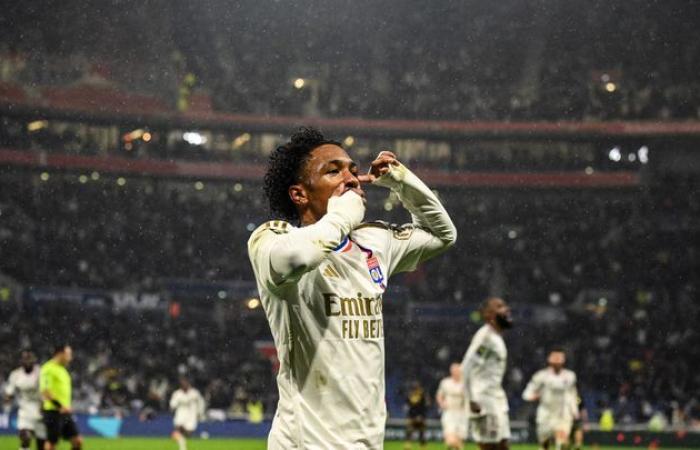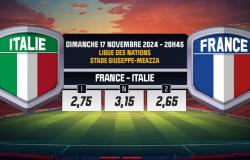Olympique Lyonnais plunged into turmoil. The day after the decision of the National Directorate of Management Control (DNCG) to “conservatively downgrade” the Rhone club, Friday November 15, many questions arise about the future of one of the biggest clubs in the championship from France. What solutions are now available to John Textor, the American owner who will take charge of OL in 2022? How to avoid the fall of a French Football monument? For franceinfo: sport, Luc Arrondel, researcher at the CNRS (National Center for Scientific Research), economist, and co-author of the book Football money (with Richard Duhautois) gives the first elements of an answer.
franceinfo: sport: Why is the current situation at Olympique Lyonnais so serious?
Luc Arrondel: The DNCG has decided on three measures:ban on recruitment, the control of the wage bill and relegation as a precautionary measure. Thus, if OL do not provide a financial guarantee before the end of the season, the club will be relegated to Ligue 2 next year. This decision is linked to the club's financial problems, which were made public last week in the latest report. For a club like Lyon, being in Ligue 2 would be a disaster. Lyon's economic model still implies qualifying for the Champions League on a regular basis.
“There is a financial gulf between the budgets of Ligue 1 (around 2 billion in total for the 20 clubs) and Ligue 2 (between 400 000 et 500 000 euros), which calls into question the club's economic model.”
Luc Arrondel, researcher at CNRS, economistat franceinfo: sport
Why did the DNCG make such a decision?
When we look at the balance sheet, there is two solvency indices. Lhas cash solvency first, in other words does the club generates enough income to cover its expenses? On the latest assessment, OL have a deficit of around 30 million, if we do not take into consideration depreciation [de l’achat des joueurs qui se règle sur plusieurs saisons et qui s’intègre donc dans le bilan comptable sur plusieurs années]..

The second clue is thebalance sheet insolvency, which allows you to know if the club is solvent, that is, if the owner can meet his debt. Ces In recent years there has been a sale of several assets. They sold their women's team, their American franchise and their Arena. On the other hand, there was also a drop in equity linked to the repurchase of Jean-Michel Aulas' shares, with at the same time an increase in debt which amounted to 500 million euros.
Thus, the assets do not cover liabilities. And I think it's more this balance sheet insolvency considered by the DNCG. The club is therefore “not solvent”. It is for this reason that the DNCG ruled on this “confiscatory relegation”. NOW, responsible for the owner Jean-Textor, to provide cash and financial guarantees to ensure the financial survival of the club.
In this context, what are the solutions for Lyon?
The plan presented by OL is the sale of players within the group to which Lyon belongs, Eagle Football Group, before December. The latter owns several football clubs like Crystal Palace (England), Botafogo (Brazil), Molenbeek (Belgium), and a training center. There is also the sale of players in the winter transfer window and the sale of his shares in Crystal Palace. Finally, the introduction of Holding Eagle to the New York Stock Exchange is also on the table to try to recapitalize the group.
But with the decision of the DNCG, which is rather negative, it will be more complicated for OL to find new investors and sell its players, and to sell them well.
By being prevented from buying new players while having to sell them, the sporting objective risks being called into question?
Oui, quite. On a sporting level this is not going to get better because if you are forced to sell players to make up your deficit, it will be difficult to shine on the football scene. The sales of Rayan Cherki and Malick Fofana, their two most expensive players, are in the pipeline. But from the moment you have the knife at your throat, it becomes difficult to negotiate a big transfer.
Isn't Olympique Lyonnais paying the price for the system? financial complex of Eagle Football Group (purchase and sale of players within the same group), which is in the process of collapsing?
We have moved from one model to another, from one era to another. On observe a post-modern period of football until the 2020s, where ownership structures were mostly linked to billionaires or local owners, etc. This was also the case for Lyon with Jean-Michel Aulas. DSince Covid in particular, we have seen the arrival of American investors and investment funds. CWhat is somewhat related to this trend is the development of timeshares. And Lyon is right in it.
“We are in a hyper-modern period, with new investors arriving in football, and who are often looking for returns.”
Luc Arrondel, researcher at CNRS, economistat franceinfo: sport
It should also be remembered that the Ares investment fund lent a lot of money to Holding Eagle, amount of 500 million, and I presume that there are requests for guarantees. SO, if Lyon and Textor fail to repay their debts when due, this investment fund could recover the club. This is what happened in Italy for example with AC Milan, where the Chinese owner was unable to pay his debts, and the American Redbird fund took over the club. CThis is a possible scenario.
Do we see the limits of this type of financial arrangement?
To rule on this subject, we would need to look more precisely at the movements. But it is true that the transfer of Ernest Nuamah from Molenbeek to Lyon for example was a little overpaid, which undoubtedly made it possible to fill the coffers of Molenbeek, but to the detriment of Lyon.
Another thing raises questions: they havendu lots of assets. The American franchise was bought for 3 or 4 million dollars by Aulas and last year they sold it for almost 50 million dollars. The women's team was sold to an American owner, who owns other franchises in the United States, to around 50 million euros. They also sold their Arena for around a hundred million euros. There is therefore a loss of assets, which, normally, should have put finances in the green. Presumably this was not the case.







